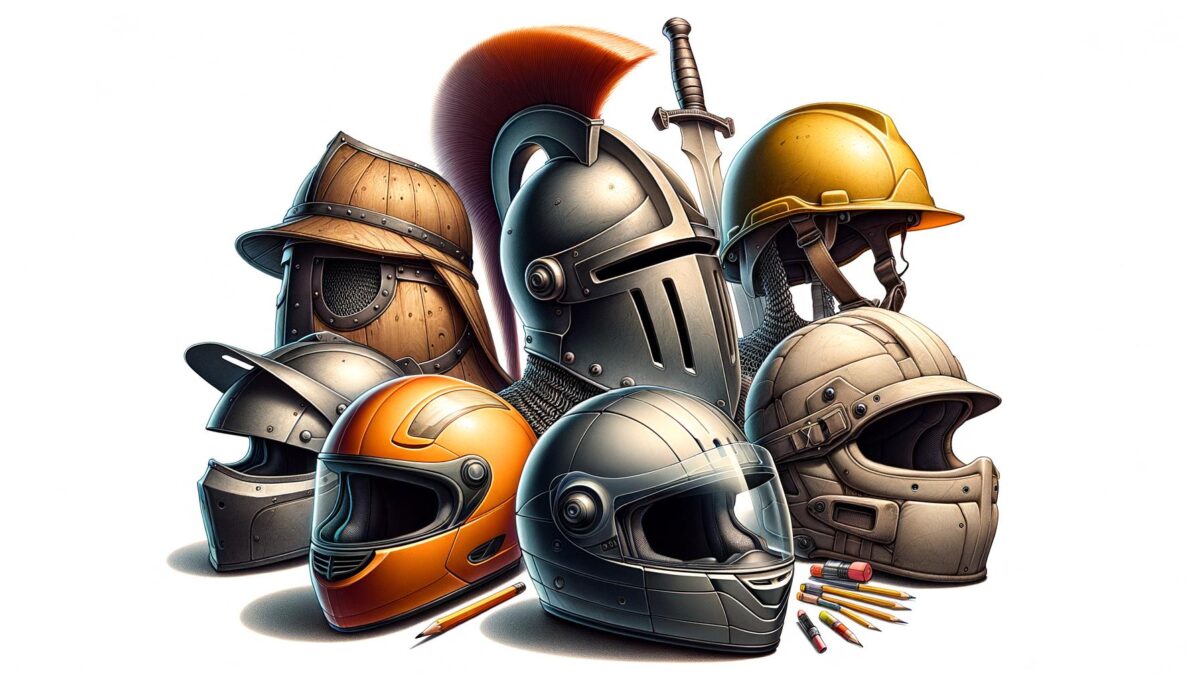The Evolution of Safety Helmets
The journey of safety helmets from simple head coverings to advanced protective gear is fascinating. In the early days, helmets were primarily designed for military use, crafted from metal or leather to shield against enemies’ weapons. As industries grew and technology advanced, the necessity for helmets in various sectors became evident. Today’s safety helmets are the result of years of research and innovation, designed to offer maximum protection while ensuring comfort and practicality. They are made from lightweight materials like polycarbonate and fiberglass, which provide robust protection without compromising mobility. This evolution highlights the growing importance of safety helmets in mitigating risks associated with high-risk activities.
Why Safety Helmets are Essential
Safety helmets are vital in many situations, including construction, cycling, and sports. They serve as a protective barrier, reducing the risk of head injuries that could have serious consequences. The head is one of the most vulnerable parts of the body, and even minor impacts can lead to significant trauma. Helmets are engineered to absorb shock during impact, dispersing energy away from the skull. Key reasons for wearing a safety helmet include:
- Protection from head injuries
- Compliance with safety regulations
- Enhanced visibility with reflective features
- Comfort and ergonomic design
By choosing to wear a safety helmet, individuals proactively prioritize their safety, potentially saving themselves from life-threatening injuries.
Types of Safety Helmets
There is a wide array of safety helmets available, each tailored to specific activities and designed to meet particular safety requirements. Some common types include:
- Construction Helmets: Known for their hard shells and suspension systems, these helmets are commonly used on construction sites to protect workers from falling objects and electric shocks.
- Bike Helmets: Specifically designed for cycling, these helmets have aerodynamic shapes and are lightweight to minimize drag and increase comfort during long rides.
- Moto Helmets: Used by motorcyclists, these helmets provide full-face protection and often include visors to shield the face and eyes from wind and debris.
- Sport Helmets: Tailored for specific sports like skiing, equestrian, or rock climbing, offering essential protection while ensuring the freedom of movement needed for performance.
Choosing the right safety helmet involves understanding the specific risks associated with the activity and ensuring the helmet meets the required safety standards.
Technological Advancements in Safety Helmets
Technological innovations continue to revolutionize safety helmets, enhancing their functionality and protective capabilities. Modern helmets often incorporate features like:
- Impact Sensors: These detect the force of an impact and can alert emergency services in case of a severe hit.
- Ventilation Systems: Advanced designs allow for improved airflow to keep the user cool, enhancing comfort during extended use.
- Adjustable Straps and Fit Systems: They ensure a snug and secure fit, crucial for effectiveness in protecting against impacts.
- Smart Technology: Some helmets integrate communication systems or cameras, particularly beneficial for professional users in extreme environments.
These advancements make safety helmets not only smarter but also more user-friendly, appealing to a broader range of users who value efficiency alongside protection.
Promoting a Safety-First Culture
The role of safety helmets extends beyond individual safety; it reflects a broader commitment to fostering a culture of safety in workplaces, sports arenas, and leisure activities. Encouraging the use of safety helmets is essential to minimizing injury risks and promoting awareness of personal protection. Organizations and communities can enhance their safety norms by:
- Implementing strict safety helmet policies and training programs
- Raising awareness through educational campaigns
- Providing easy access to high-quality safety helmets
- Regularly reviewing and updating safety standards
By prioritizing helmet use and other safety measures, societies can significantly reduce the incidence of head injuries, ultimately leading to safer environments for everyone.
Conclusion
Safety helmets are a crucial facet of personal safety that cannot be ignored. Their effectiveness in preventing head injuries highlights their importance across various activities, from construction to cycling and professional sports. As technological advancements continue to enhance helmet design, the onus remains on individuals and organizations to prioritize their use and promote a culture that values safety above all else. Through deliberate efforts to adopt and advocate for safety helmets, we can significantly reduce injury risks and safeguard our futures.
